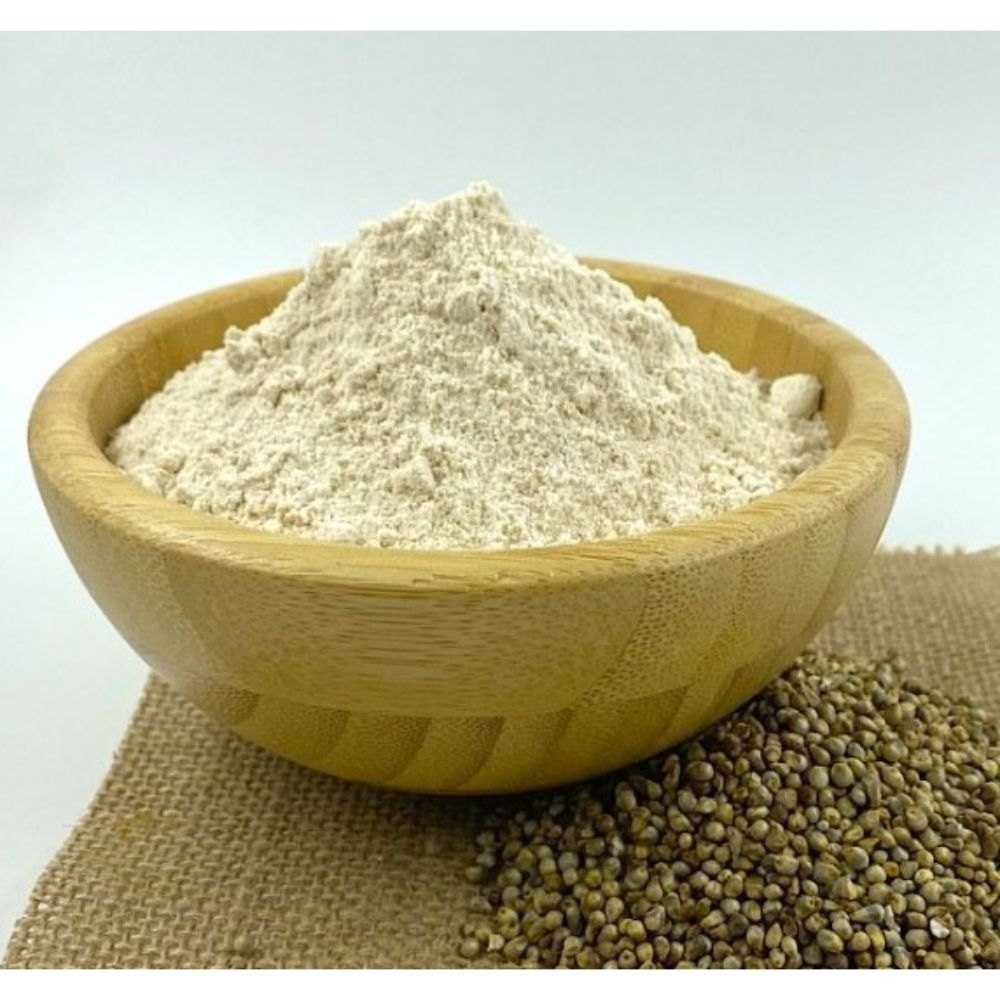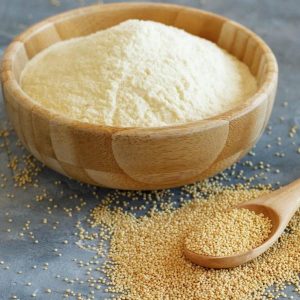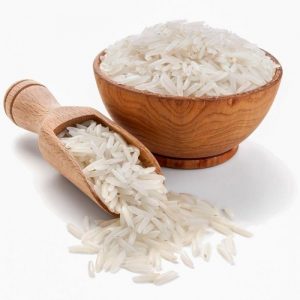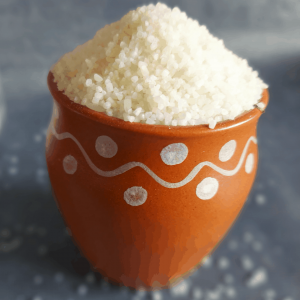Description
Bajra flour, also known as pearl millet flour, is a type of flour made from grinding dried bajra grains. Bajra, or pearl millet (scientifically known as Pennisetum glaucum), is a drought-tolerant cereal crop widely grown in Africa and the Indian subcontinent. Bajra flour is a staple ingredient in many regional cuisines, particularly in India, where it is used to make various traditional dishes.
Here are some key characteristics and uses of bajra flour:
1. Nutritional Profile: Bajra flour is rich in nutrients and offers several health benefits. It is gluten-free, making it suitable for individuals with gluten intolerance or celiac disease. Bajra flour is high in fiber, protein, vitamins, and minerals, including iron, magnesium, phosphorus, and potassium. It is also low in fat and cholesterol, making it a nutritious addition to a balanced diet.
2. Traditional Dishes: Bajra flour is commonly used in Indian cuisine to make a variety of traditional dishes. One popular preparation is “bajra roti” or pearl millet flatbread, which is made by mixing bajra flour with water and salt to form a dough, which is then rolled out into flatbreads and cooked on a griddle. Bajra roti is often served with curries, lentils, or yogurt.
3. Snacks and Sweets: Bajra flour is also used to make snacks and sweets in Indian cuisine. It can be combined with other flours, such as wheat flour or chickpea flour, to make savory snacks like “bajra vada” (deep-fried bajra fritters) or “bajra khichdi” (a savory porridge made with bajra flour and lentils). Bajra flour is also used to make sweet dishes like “bajra ladoo” (pearl millet energy balls) or “bajra halwa” (a sweet pudding made with bajra flour, sugar, and ghee).
4. Baking: Bajra flour can be used in baking to make gluten-free bread, muffins, cookies, and cakes. It adds a slightly nutty flavor and dense texture to baked goods. Bajra flour can be used alone or combined with other gluten-free flours, such as rice flour or sorghum flour, to improve the texture and flavor of baked goods.
5. Health Benefits: Bajra flour is considered a nutritious whole grain with several health benefits. It is high in fiber, which promotes digestive health and helps regulate blood sugar levels. Bajra flour is also rich in iron, making it beneficial for individuals with iron deficiency anemia. Additionally, the high protein content of bajra flour helps support muscle growth and repair.
6. Availability: Bajra flour is widely available in Indian grocery stores and specialty health food stores. It can also be purchased online from various retailers. When purchasing bajra flour, it’s essential to check the packaging for freshness and store it in an airtight container in a cool, dry place to maintain its quality.
Overall, bajra flour is a versatile and nutritious ingredient that adds flavor, texture, and health benefits to a wide range of dishes. Whether used in traditional Indian recipes or gluten-free baking, bajra flour is a valuable addition to any kitchen pantry.






Samuel –
I’ve been experimenting with different flours lately, and I must say, this bajra flour has become a staple in my pantry. Not only does it add a unique flavor and texture to my dishes, but it also offers a nice change from traditional wheat flour.
Yusuf –
Absolutely love this bajra flour! As someone who is gluten-sensitive, finding alternative flours that still taste great can be a challenge. This flour has a wonderfully nutty flavor and works perfectly in my gluten-free baking recipes.